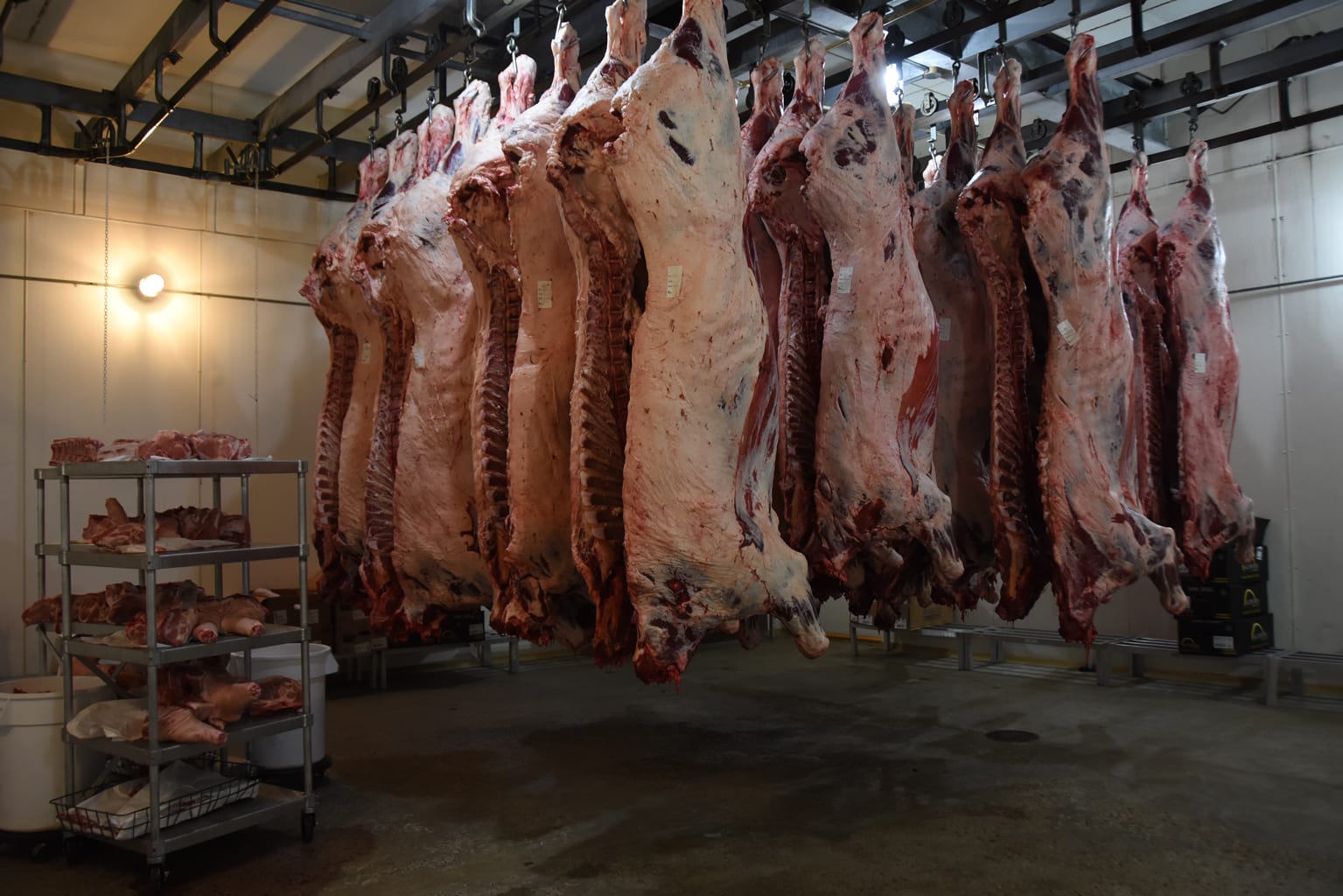What Makes Bagley Farms Meat Market Edwardsville IL Stand Apart for Meat Lovers
What Makes Bagley Farms Meat Market Edwardsville IL Stand Apart for Meat Lovers
Blog Article
Reveal the Art of the Butcher's Cut in a Modern Meat Market
In the ever-evolving landscape of modern meat markets, the butcher's cut has actually transcended its traditional origins, combining olden craftsmanship with contemporary practices. Today's butchers are not merely processors of meat; they are well-informed artisans that emphasize sustainability and moral sourcing. Their expertise in selecting and preparing cuts tailored to specific cooking requirements supplies an exceptional eating experience. Yet, what truly sets the modern butcher apart is their ability to create a much deeper link in between customers and the beginnings of their meat. How do these masters equilibrium custom with development, and what implications does this have for the future of meat consumption?
Evolution of Butchery Methods
The evolution of butchery strategies reflects an abundant tapestry of development and adaptation driven by developments in modern technology, changes in consumer demand, and a much deeper understanding of meat science. Historically, butchery was a craft gave via generations, with approaches honed over centuries to make best use of return and taste. Nevertheless, the commercial revolution introduced automation, transforming conventional techniques and allowing massive handling.
The mid-20th century saw butchery techniques better improved by clinical insights into muscle biology and meat aging, enhancing both inflammation and preference. Developments like vacuum cleaner product packaging and refrigeration extended product shelf-life, allowing butchers to branch out offerings and improve quality assurance. This duration likewise noted the increase of specialized devices, such as band saws and meat slicers, which boosted precision and performance in meat processing.

The 21st century has actually introduced electronic modern technology into the butchery world. Computerized systems currently aid in monitoring pet provenance and enhancing cuts to fulfill particular consumer preferences. Furthermore, a renewal in artisanal butchery has actually emerged, blending standard skills with modern-day understanding to satisfy consumers seeking honest and sustainable meat choices. This advancement highlights a dynamic interaction between tradition and development, conference modern needs while maintaining the craft's heritage.
Comprehending Meat Cuts
Comprehending the intricacies of meat cuts is vital for both butchers and customers seeking high quality and worth. For butchers, exact cuts mirror ability and respect for the craft, making certain minimal waste and optimal yield.

Comprehending muscle mass make-up is vital; muscles used more frequently by the pet often tend to be harder and are best suited you can try these out for sluggish cooking approaches, while less-used muscles, like those found in the loin, are more tender and ideal for barbecuing or roasting. Knowledge with these distinctions equips customers to make enlightened choices, enhancing their culinary endeavors.
Picking High Quality Meat
Choosing the appropriate meat involves even more than simply selecting an aesthetically enticing item from the screen. The art of choosing high quality meat calls for a discerning eye and knowledge of particular attributes that signify quality and quality.
Secondly, consider the marbling, which refers to the white flecks of fat within the muscle mass. Correct marbling is a vital indicator of tenderness and flavor, as it melts during cooking, improving the meat's juiciness. Keep in mind, greater marbling usually correlates with premium quality cuts, such as USDA Prime.
Texture is another vital aspect; meat must really feel solid to the touch, not slimy or excessively soft. Furthermore, be mindful of the fragrance. Fresh meat ought to have a clean, neutral smell, devoid of any type of sour or off-putting odors.
Pairing Cuts With Food Preparation Approaches

Conversely, tougher cuts like brisket and chuck roast are rich in collagen, which damages down right into jelly when cooked slowly. These cuts are suitable for braising or slow-moving roasting, allowing the meat to soften over time and establish deep, complicated tastes. Cuts such as short ribs and pork shoulder get on well with slow-cooking techniques, where prolonged cooking times change their durable structures right into delicious meals.
Lamb shanks and oxtail, which need extended food preparation to soften, are best prospects for stewing or sluggish simmering. These techniques coax out rich, hearty flavors while maintaining moisture. By understanding the unique characteristics of each cut, chefs and home chefs alike can boost their cooking productions, ensuring each dish is both satisfying and remarkable.
The Butcher's Function Today
Navigating the advancing landscape of the contemporary meat market, the butcher's duty today extends past mere preparation of cuts. Contemporary butchers are cooking artisans, teachers, and supporters for sustainable techniques.
In addition to crafting exact cuts, butchers currently engage directly with consumers, providing cooking recommendations and tailoring choices to match individual requirements and choices. Their knowledge in meat aging, marbling, and taste accounts empowers consumers to make educated choices, enhancing their culinary experiences. This individualized solution exemplifies the butcher's developing function as a relied on expert in the kitchen.
Additionally, butchers are crucial in minimizing waste, utilizing whole pets to develop varied items such as sausages and supplies. This comprehensive method not only values the pet yet additionally aligns with contemporary sustainability goals. In this method, the contemporary butcher symbolizes both custom and technology, adjusting to an ever-changing market while maintaining the artistry and integrity of their craft.
Conclusion
The contemporary butcher's craft intricately weaves conventional methods with contemporary developments, highlighting sustainable methods and honest sourcing. Mastery in understanding diverse meat cuts and quality indications encourages butchers to give click site enlightened referrals, straightening details cuts with optimal cooking approaches. This expertise not just boosts cooking experiences however also strengthens the link in between consumers and the origins of their food. By recognizing historic methods while accepting contemporary needs, the butcher's function stays vital in today's sophisticated meat market (bagley farms meat market edwardsville il).
Report this page